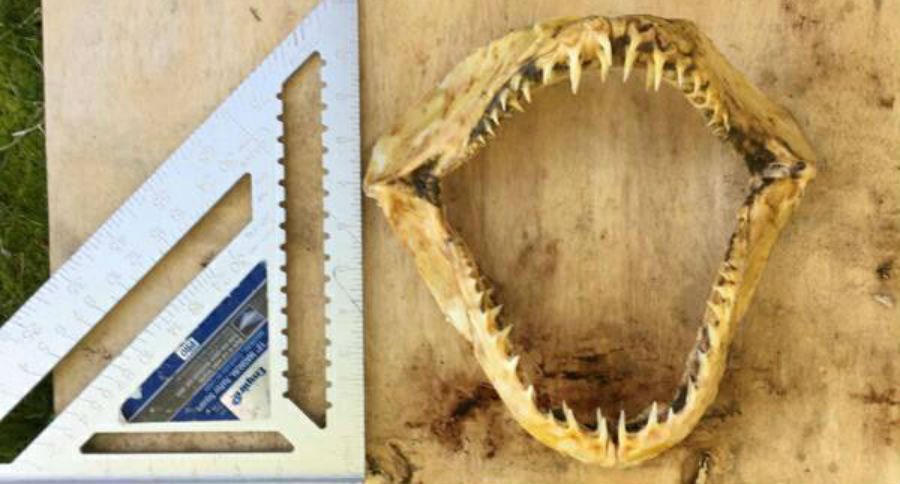After an angler snagged it, it has everyone wondering: how did a subtropical, salt water, sand tiger shark jawbone end up in chilly Minnesota waters?
A Minnesota angler snagged something recently that has a lot of folks talking, wondering and guessing. Joe Piskel was fishing in the Mississippi River just west of Grand Rapids when he snagged what he and his son Joey first thought was a sheep skull or cow jaw. That is until they got the object up close and saw that it had rows of sharp, pointy teeth.
What Joe had caught was a fully intact shark jawbone, both the upper and lower halves connected.
The pair were in a quandary, as you might imagine. How could a shark survive long enough to make it all the way up the Mississippi River to northern Minnesota?
So they took the jaws (see what I did there?) to the Grand Rapids Department of Natural Resources, hoping to get some answers. A fisheries biologist told them that the jawbone was from a sand tiger shark.
Rather than solving the riddle, that only made things worse and raised more questions. Sand tiger sharks are a subtropical salt water fish. There's no way such an animal could make it into the waters of northern Minnesota.
"I couldn't speculate how it got there, but it's doubtful it got there on its own," said DNR official Cheri Zeppelin. "The dams that are downstream from this don't allow for that kind of fish passage."
Several pictures were taken and the shark jawbone was returned to the anglers. The photos were shared on a couple of Minnesota fishing facebook pages, where they generated a lot of conversation and guesses as to their origin.
It was thought by some that the jaws were a tourist trinket that were later tossed into the river, but there also appeared to be bits of flesh between the teeth and Joey said, "Oh, yeah, it had a lot of flesh and was very rotten smelling." So that kind of put the kibosh on that theory.
It could be possible that the fisheries biologist misidentified the jaws. Bull sharks are tolerant of freshwater and could, theoretically, swim up the Mississippi River.
Whatever the origin of the jawbone, it is sure to be a topic of conversation for some time (and has probably turned some folks off from swimming or wading in that stretch of the river).
"Currently, it's in some hydrogen peroxide to clean it up, then dry it out to hang it on the wall," Joey said. "I'll have a great opening of fishing memory forever with my dad."
Like what you see here? You can read more great articles by David Smith at his facebook page, Stumpjack Outdoors.
NEXT: Model Poses Underwater with Deadly Sharks to Raise Awareness




